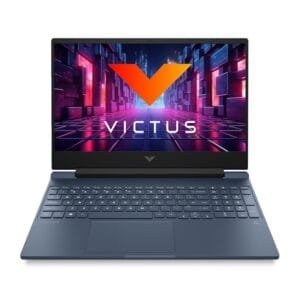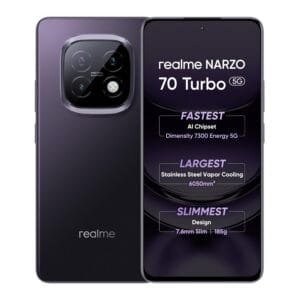
Finding the best Fortnite settings is a tricky endeavour, largely because the built-in auto-detect feature can’t be trusted. It ignores the importance of a buttery smooth frame rate in favor of simply maxing out the graphical settings to make the game look as good as possible.
Having the best graphics card that money can buy would be overkill for a game like Fortnite, with optimized settings being the real key to success, and this is where we can help. If your in-game settings are too high for your PC, this can cause problems with your frame rate, but this can be easily avoided. However, before you even boot the game, it’s best to check out the Fortnite system requirements to double-check that your gaming PC is up to the task from the get-go.
Best Fortnite settings for PC
- 3D Resolution: 100%
- Anti-Aliasing & Super Resolution: Off
- Nanite Virtualized Geometry: On
- Virtual Shadows: High
- Global Illumination: Lumen High
- Reflections: Lumen High
- View Distance: Far
- Textures: High
- Effects: High
- Post Processing: High
- Hardware Ray Tracing: Off
- Nvidia Reflex Low Latency: On
Using the above settings on our RTX 4070 testing rig (full specs under How We Test), we had an average frame rate of 115fps, with 1% lows of 78fps. This felt perfect for competitive, festival, and solo play in the Lego survival game modes.
If you find that your frame rate is quite jumpy or the general performance isn’t where you want it to be, be sure you check your broadband connection first to eliminate this as a contributing factor.
If you’re still struggling, start by lowering the global illumination setting before moving on to reflections, shadows, and textures. This gradual lowering isn’t ideal, but you’ll be able to see the instant impact on frame rate during matches, so you’ll know for sure if the changes you’re making are worth it.
Another approach that we find works well in competitive shooters is to start at the lowest possible settings and slowly work the graphical and lighting details up until you’re happy with the balance between performance and visuals.
Best Fortnite settings for Steam Deck
It’s not currently possible to play Fortnite natively on the Steam Deck using SteamOS due to anti-cheat software. There are two ways around this, one being to install Windows on your Deck, but the alternative is far easier.
You can instead download the GeForce Now native app onto your Steam Deck, connect your Epic account to it, and play Fortnite this way. There are paid subscription tiers available, but even with a free account, you can play for up to an hour per session, enough time to get a few rounds in easily.
Fortnite will only be playable natively on the Steam Deck if Epic chooses to change its anti-cheat software to something that Linux-based operating systems can use.
Fortnite graphics presets
Fortnite currently has four graphics presets in total, they are:
You can choose to auto-set your graphics settings when first booting the game or via the graphics menu at any time, but as we’ve already mentioned, this tool isn’t ideal for finding the best performance. Cycling through the above presets is possible during a match, too, if you want to see how the performance changes between each one.
How we tested Fortnite
At PCGamesN, we use dedicated gaming rigs to test the best settings for performance and gameplay in the latest releases. The test rig used to play Fortnite includes the following components: Intel Core i7-11700F, Nvidia GeForce RTX 4070 12GB, 32GB of DDR4 3,200MHz RAM in a dual-channel configuration, and MSI B560 motherboard. We also test using Windows 11 64-bit.
We always run our testing first at 1,920 x 1,080 to identify the best settings for this entry-level resolution, then again at 2,560 x 1,440 using the same setup to gauge the difference in performance. We use CapFrameX to capture frame data and compare testing sessions.
Does Fortnite need an SSD?
Fortnite does not require an SSD, but due to the long loading times you can experience without one, it’s highly recommended that you upgrade if you still currently use a mechanical drive.
If you grab yourself the best SSD for your existing gaming PC, it will really help keep game loading times in check and help you get the chunky 130GB game file downloaded much quicker.
How to monitor performance in Fortnite
If you want to keep an eye on performance in Fortnite, we have an easy method that works whether you’re using an Nvidia or AMD graphics card.
For Nvidia cards, ensure you have the Nvidia App installed and the in-game overlay enabled, and then hit ALT + R in-game to bring up your performance monitor. With AMD cards, you can enable performance monitoring via the Radeon overlay using the shortcut CTRL + SHIFT + O.
Alternatively, you can download free software such as CapFrameX or Nvidia FrameView, to get a cleaner, more simplified benchmarking tool that works with any graphics card.
With handheld gaming PCs, most will have a dedicated button to access a quick menu from which performance monitoring, sometimes called real-time monitoring, can be accessed.
If you’re struggling to get into Fortnite for any reason, be sure to check out the Fortnite server status to make sure you’re not trying to log in during maintenance or a potential outage.
You can follow us on Google News for daily PC games news, reviews, and guides. We’ve also got a vibrant community Discord server, where you can chat about this story with members of the team and fellow readers.



